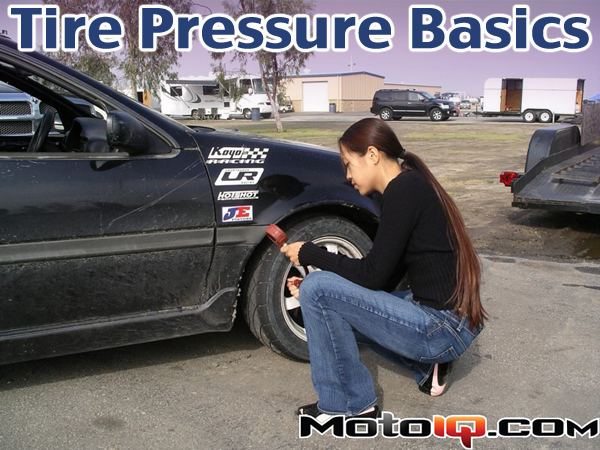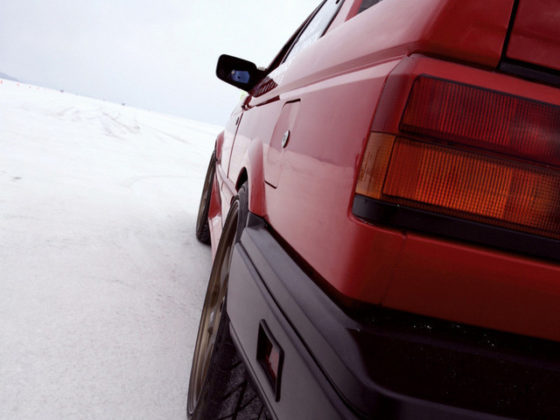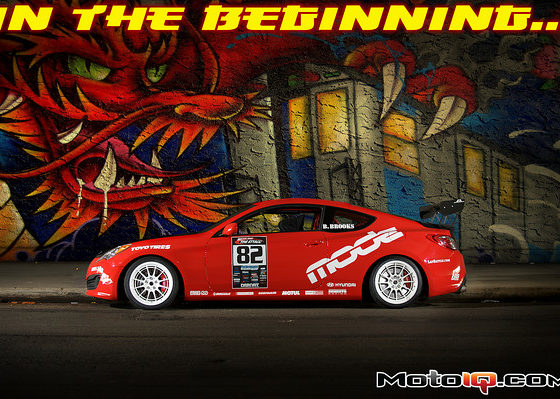,
What Works Best for You
 You can determine your optimal tire pressure in several ways. The best way is to use a tire pyrometer. This digital thermometer costs about $150 bucks and is designed especially for use with tires. As soon as you come off the track, stick the probe of the Pyrometer about 1/16 of an inch into the tread rubber starting at the outer shoulder, then the middle and finally the inside. Ideally you should see a 10 degree difference from the inside to the outside with the inside being about 10 degrees hotter than the outside, depending on which direction the track favors. With a distribution like this, you can know that you are getting the maximum amount of traction from your tires. Unless you have a real racecar with fully adjustable suspension like a PT racecar, you probably won’t see this sort of temperature distribution. Regular street cars like your daily driver nearly always run much hotter on the outside corner of the tread.
You can determine your optimal tire pressure in several ways. The best way is to use a tire pyrometer. This digital thermometer costs about $150 bucks and is designed especially for use with tires. As soon as you come off the track, stick the probe of the Pyrometer about 1/16 of an inch into the tread rubber starting at the outer shoulder, then the middle and finally the inside. Ideally you should see a 10 degree difference from the inside to the outside with the inside being about 10 degrees hotter than the outside, depending on which direction the track favors. With a distribution like this, you can know that you are getting the maximum amount of traction from your tires. Unless you have a real racecar with fully adjustable suspension like a PT racecar, you probably won’t see this sort of temperature distribution. Regular street cars like your daily driver nearly always run much hotter on the outside corner of the tread.
Adjust your tire pressure so that the temperature distribution is as even across the surface of the tire as possible. This might take quite a bit of pressure. If the middle of the tire starts to get hotter than the shoulders, you are going too far and should back up a bit until the middle is just a few degrees cooler than the shoulders. Be sure to write down your tire temps and take notes of your changes.
If you don’t have the money for a pyrometer, simple stripes of white shoe polish from your sidewalls to the tread can get you by. Adjust your tire pressure until the shoe polish gets rubbed off right to the point where the tread rolls around the corner of the sidewall. If the polish is getting rubbed off the sidewall, add pressure until it doesn’t anymore. And, make sure that you’re not mistaking running over the FIA curb (the red and white stripped curbs on the racetrack) for tire rollover.





3 comments
What is the actual relationship between grip and tire pressure? Some say that in order to increase grip you should decrease your tire pressure to increase the contact patch, but others say that in order to increase grip, you should increase your tire pressure (presumably to decrease your slip angle). When do I increase my tire pressure for more grip or decrease it for more grip and how does the race conditions change this (wet, gravel, snow, hot tarmac, etc.)? Any help is appreciated.
It really depends on the tire and the suspension.
For straight line acceleration lower pressure. For cornering grip the pressure vs grip relationship is negative parabolic with the pressure at the vertex being optimum. To increase grip you increase pressure if your current pressure is below optimum, conversely decrease pressure if your current pressure is above optimum. So before making adjustments, you have to first determine if you’re currently above or below optimum pressures. Find your optimum pressure using the methods described in the article (i. e., tread temps or marking sidewall).